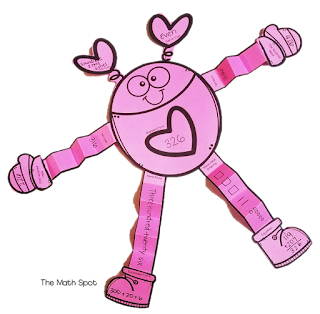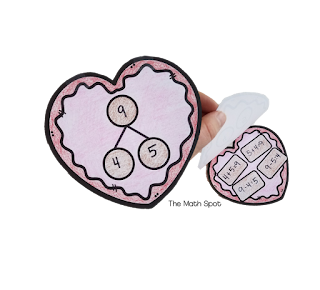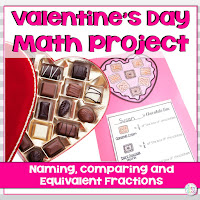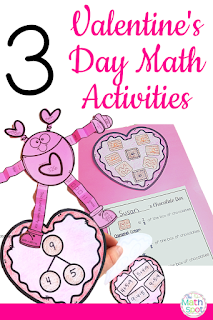This post contains affiliate links. This means that when you make a purchase, at no additional cost to you, I will earn a small commission.
Valentine’s Day in the classroom has a different energy than a typical school day. Meet your students and their energy with a fun and novel math activity that keeps them learning. Try one of these 3 Valentine’s Day math crafts this upcoming holiday!
Valentine’s Day Love Bug Place Value Math Craft
To do this activity with your students, you will need to provide your students with bug bodies. Accordion fold strips of paper for arms and legs and your students are ready to create this cute craft! Allow your students to choose a 3-digit number and ask them to show different representations of their number on the bug’s body, arms and legs. If you want to add space for even more representations, you can also add hands and feet to your Love Bug. Representations can include:
- Unit Form
- Word Form
- Standard Form
- Expanded Form
- Place Value Drawing
- Show the Number in Money
- Even or Odd
- Equation
- Etc!
Fact Family Valentine’s Day Math Craft
This activity is perfect for a kindergarten or first grade class. Give your students 2 heart templates. On one template, ask your students to create a number bond. On the second template, ask your students to write 4 (or 8!) related number sentences. I HIGHLY recommend allowing your students to use linking cubes in two colors to help to generate the related number sentences. For example, a 4,5,9 number bond can be explored with 4 red cubes and 5 blue cubes. As students put the cubes together and take the cubes apart they can list the related facts.
Fraction Chocolate Box Valentine’s Day Activity
 Third or Fourth grade students would benefit from this Valentine’s Day activity. Give your students a chocolate box template with a set number of chocolates. Ask your students to “fill” the chocolate box with a small selection of chocolates they design themselves. I like having 8 chocolates and asking the students to fill the box with 3 types of chocolates they design themselves. Eight is a nice number because it plays will with equivalent fractions (1/2 and 1/4) so there is room for students to explore. Next, ask your students to describe their chocolate box in terms of fractions, compare the fraction of different types of chocolates and look for equivalent fractions.
Third or Fourth grade students would benefit from this Valentine’s Day activity. Give your students a chocolate box template with a set number of chocolates. Ask your students to “fill” the chocolate box with a small selection of chocolates they design themselves. I like having 8 chocolates and asking the students to fill the box with 3 types of chocolates they design themselves. Eight is a nice number because it plays will with equivalent fractions (1/2 and 1/4) so there is room for students to explore. Next, ask your students to describe their chocolate box in terms of fractions, compare the fraction of different types of chocolates and look for equivalent fractions.If you are looking for a QUICK way to introduce any of these activities to your students, I have created templates and planning pages. A quick “print and go” will have your students engaged and ready to go!
Related Resources:
Pin For Later:











